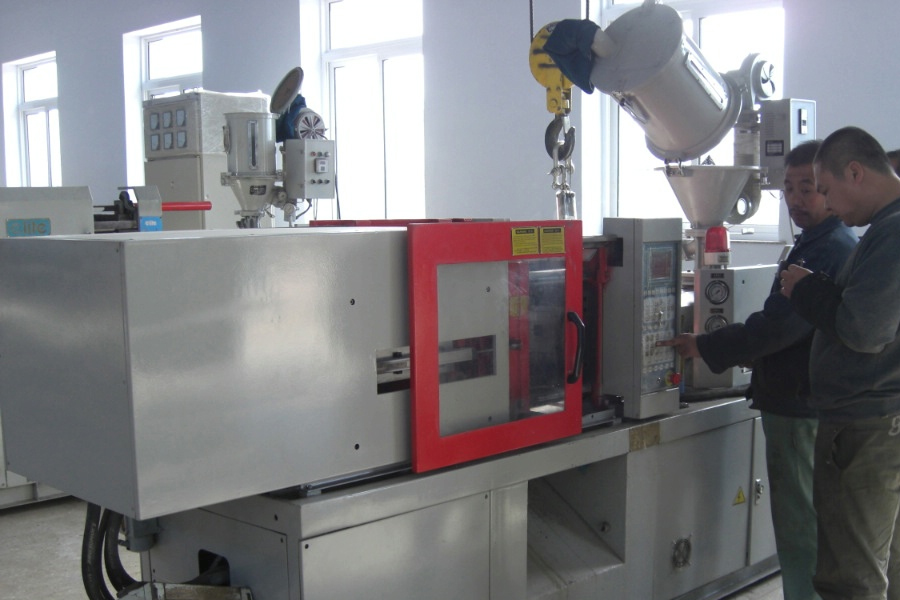1. Which types of guideway straightness errors are applicable to the CNC lathe research method?
Answer: When using the scraping method to correct the straightness error of the guide rail, the point method is mostly used. Grinding point method is often used for the detection of shorter guide rails, because the flat ruler simply deforms when it exceeds 2000mm, making it difficult to manufacture, and affects the measurement accuracy. When scraping the short guide rail, the straightness error of the guide rail is usually ensured by the accuracy of the flat ruler. There is also a certain demand for the density of the research point per unit area. According to the accuracy requirements in the middle of the processing and the position of the guide rail in the middle of the processing For the nature and importance, the separation requirement is not less than 10-20 points per 25mm × 25mm internal research points (that is, the number of ideas per scratch).
When using the research method to detect the straightness error of the guide rail, because it cannot measure the error value of the straightness of the guide rail, when there is a spirit level, it is usually not necessary to use the research method to detect. However, it should be pointed out that in the absence of measuring instruments (levels, optical flatness, etc.), the selection of three flat ruler inter-research methods to check the ruler can effectively meet the detection requirements of the straightness errors of the usual short intermediate guides.
2. For CNC lathes, for the guide rails of different shapes, the straightness of each plane should be different from the control surface.
Answer: The common shapes of the middle guide rails are rectangular guide rails and V-shaped guide rails. The horizontal appearance of the rectangular guide rail controls the straightness error in the straight plane. The two surrounding surfaces of the rectangular guide rail control the straightness error of the guide rail in the horizontal plane. For the V-shaped guide rail, because the guide rail is composed of two oblique appearances, the two oblique appearances control both the straightness error in the straight plane and the straightness error in the horizontal plane.
3. What are the common detection methods for guide rail straightness errors?
Answer: Commonly used detection methods for the straightness errors of the guide rails are: the research method, the flat-foot comparison method, the pad method, the wire-drawing method and the level test method, and the optical straightness (autocollimator) test method.
4. What is the research method?
Answer: When using a flat ruler to detect the straightness error of the guide rail, apply a thin layer of erythril oil evenly on the surface of the tested rail, cover the flat ruler on the surface of the tested rail, and reciprocate at short intervals with the appropriate pressure. Grinding point, and then take off the flat ruler to investigate the distribution of the grinding point on the surface of the inspected rail and the density of the sparseness of the grinding point. The research points are evenly distributed over the entire length of the guide rail, indicating that the straightness error of the guide rail has reached the corresponding accuracy requirement of the flat ruler. This method is called the research method.
The flat ruler used in the research point method is a standard straight ruler, and its accuracy level is selected according to the accuracy requirements of the rail to be inspected, usually not less than level 6. The length is not shorter than the length of the rail to be inspected (in the case of low accuracy requirements, the length of the flat ruler can be 1/4 shorter than that of the rail).
5. The comparison method of horizontal lathe comparison table of CNC lathe is suitable for measuring the straightness error of which plane of the guide rail?
Answer: The comparison method of flat gauge pull meter is usually used to detect the straightness error of the short rail in the straight plane and the horizontal plane. In order to improve the stability of the measurement reading, the length of the horn moving on the rail under test usually does not exceed 200mm, and the touch surface of the horn and rail should be matched with the rail under test to make it touch excellent, otherwise it will affect the measurement Accuracy.
(1) Detection method of straightness error in straight plane Place the flat-foot working surface horizontally and place it around the tested rail, the closer the better, to reduce the influence of rail distortion on the measurement accuracy. Put a scraper on the guide rail and fix the dial gauge seat on the pad iron, so that the dial gauge probe has to care about the appearance of the two ends of the ruler, adjust the flat rule so that the dial gauge cares about the appearance of the two ends The reading is flat, then move the horn and read the dial indicator value every 200mm. The large difference between the dial indicator readings is the error in the straightness of the entire length of the guide rail. During the measurement, in order to prevent the influence of the scratch point and make the reading accurate, place a measuring block under the dial gauge probe.
